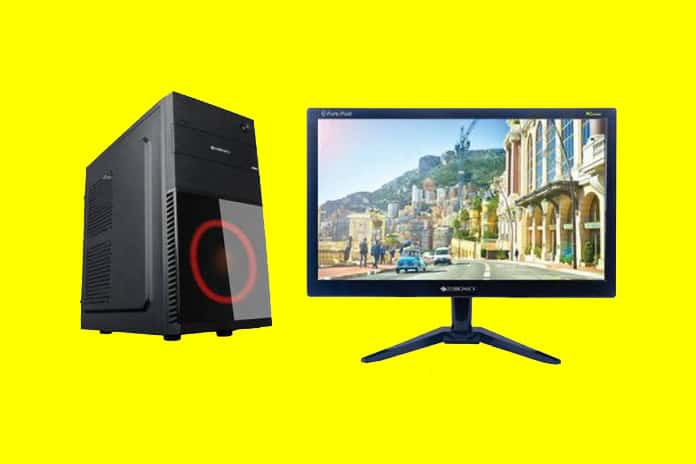When walking into a big box store you always get that one freshly trained salesperson who will try to sell you a bunch of stuff you don’t need. If you don’t know what to look out for you may be spending extra money on extra parts you don’t need.
Building your own Day Trading Computer doesn’t have to be difficult if you know your requirements beforehand and know the tools of your trade. Here’s a handy guide to go over some essentials and a few extras to DIY your own day trading the computer.
The Computer
First thing’s first – the computer itself is obviously the quintessential element you need to begin trading. You want to make sure you find one that can handle a fast solid-state drive and also multiple monitors.
My favorite is the Falcon PC not only for their price point but they are fast and compact as well. Their A-10 is also one of the best trading computers for beginners and can be upgraded easily.
CPU
Your CPU is what keeps your computer going and the more powerful it is the faster your computer will be. Processors are available from 1GHz – 4GHz, with 1 being the slowest. You’re going to want to watch out for the number of cores in your CPU. The more cores in a CPU the more processes your computer can run simultaneously. For day trading you probably won’t need one that’s top of the line, but find one with at least 4 cores.
Hard Drives
Everyone knows the bigger the drive the more storage space it has for your OS, data, programs etc. For everyday computing most people use a hard disk drive (or an HDD) because they’re cheaper. However a Solid-State drive (SSD) is the preferred drive for trading computers. This is because they perform much faster – which will eliminate any hiccups or pauses while trading.
RAM
The random access memory is utilized when you open and run your programs. Think of it as short term memory whereas your hard drive is long term memory. Because you’ll probably have chats or browsers open while your trading software is also running, you’ll need a RAM with lots of space. 4GB is an alright amount of space, but if you can find yourself a RAM of 8GB-16GB to ensure optimal speed.
Graphics Card
Graphics card’s are also incredibly crucial to your build – without them you won’t be able to see anything on your screen. Since you’ll be using more than two monitors for your trading it’s strongly recommended you get a powerful one. This will make graphics look all around sharper and will allow you to see them better on multiple screens. A graphics card with a 2GB memory is fine for daily computing, but because multiple monitor setups should use a GPU of 4GB’s or higher.
The Monitor
Okay so you probably already know what a monitor is – and in the world of trading they’re incredibly important. For newer traders a set up of at least 2 monitors is recommended. This will allow you to view 4 charts on each, meaning you can see a total of 8 at once. Pros typically favor a 6 monitor setup.
Resolution
These days a 1080p monitor is most common, and you should go with a resolution that matches your graphics card. However 4k monitors will give you a much clearer image with sharper details.
Size
The size of your monitor is reliant on two things: your personal preference and your trading space. You should aim to match the size of your trading space. This might mean putting smaller monitors together to fit on a desk, or larger ones to fill a room. It also depends on how well you see and what orientation works best for you.
Stands & Mounts
The stand that comes with your monitor won’t be able to support more than one monitor and you’re also going to want an ergonomic option if you plan on trading for more than a few hours. There are three ways day traders assemble their monitor setup.
Desk mounts can typically hold between 1 – 2 monitors and are attached directly on the back of the monitor. It will also conveniently clamp to your desk.
Wall mounts are another method of monitor hookup. You’ve probably seen similar ones for televisions mounted on walls. They’re great because they keep your monitors in place and you can move them forward or backward, but they are a permanent solution so only adhere monitors this way if you’re going to be using them in the long run.
Monitor stands are your best bet when it comes to monitor organization. Monitor stands will grip the sides of your monitors and will easily allow for 4 monitors to be displayed at a time. They may not be the smallest, but they will still fit on a large desk or table.
Conclusion
Some of the things listed here you may find to be expensive at first, but if you know where to look you can easily get the most bang for your buck. Remember you’re also spending money on elements that are built to last and handle any amount of day trading.
Also Read: Top 5 Best PC Anti-Virus Software



